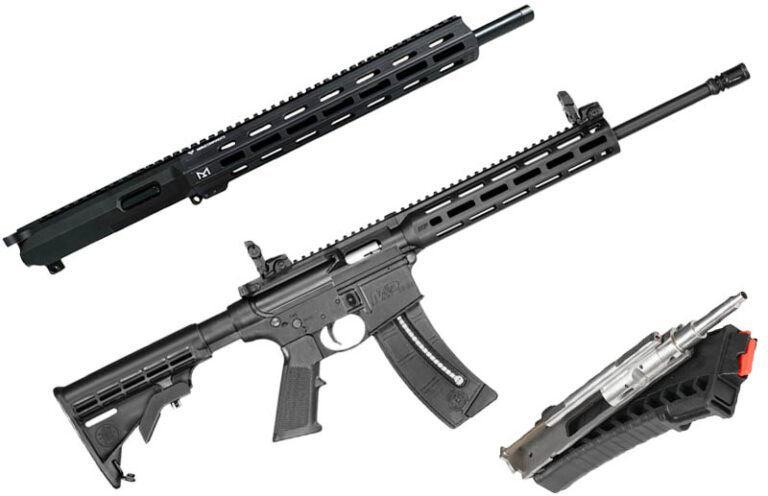
The author takes a look at the .22 LR AR concept and discusses what AR-22s are, what they’re good for and the best models to buy.
“AR-22” is the nickname of AR-15-pattern rifles chambered in .22 LR, and they’ve become wickedly popular in the U.S. thanks to the low cost of both the guns and ammunition. While it proves extremely fun, even practical for certain uses, many shooters don’t fully understand the virtues and limitations of the platform.
If you’re considering an AR-22 yourself, we’re going to go over exactly what it is, what it's useful for and finally a buyer’s guide covering five excellent examples to consider.

There's No Such Thing As An AR-22
If you weren't already aware, Armalite (the original, not successors with rights to the name) numbered its designs based on the order of release. In other words, the company's first gun was the AR-1, the 15th was the AR-15 and the 18th was the AR-18. Given the AR-18's commercial failure, however, it was also Armalite's final design. If the company continued on, its 22nd gun would have likely been called the AR-22, but it also probably wouldn’t have been a .22 LR AR-15. Regardless of whether or not Armalite coined the name, it stuck, and now AR-22 is an accepted colloquialism for .22 LR ARs.
Semantics aside, where did the .22 LR AR platform concept originate?
Generally, the MAC/Atchisson is considered the first marketable conversion kit, first developed in the 1970s by Maxwell Atchisson, then an employee of the Military Armament Corporation. Atchisson's kit featured a drop-in .22 LR bolt carrier and a 16-round .22 LR magazine. The self-contained unit simply replaced the standard .223/5.56 bolt carrier group and converted it to direct blowback operation, with the unit’s chamber adaptor enabling the use of .22 LR ammunition.

Only requiring a swap of the BCG and magazine, the conversion process was quick and simple. Unlike .22 LR conversions for other rifles, the .223-caliber chambering of the AR-15 meant a barrel conversion was not required. The different ammo, however, changed the point of impact.
After initial production by MAC (which went bankrupt by 1975) the rights were leased or purchased by several other companies that manufactured them, most notably J.A. Ciener who still does to this day.
Colt followed suit with their own conversion kit in the 1990s as an accessory for the company’s sporter AR-15s.
The first complete “AR-22” (meaning a dedicated lower and upper, an entire rifle) was arguably the Armi Jager AP-15 and AP-74 rifles. Though they look the part at a glance, they aren't true “AR-22” rifles due to a number of differences from actual AR-pattern firearms. There are some contemporary versions of this concept too such as Smith & Wesson’s M&P15-22.
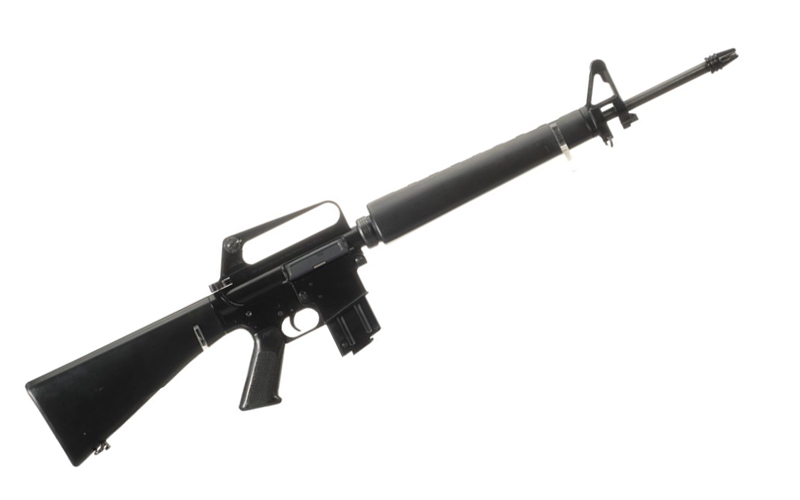
Today's conversion kits are but variations of and developments on the original Atchisson design, with manufacturers such as CMMG having created its own magazines for improved function.
What Is An AR-22 Best Used For?
The utility of any firearm is primarily dictated by its caliber, so it follows that an AR-22 will be most useful for any task that a .22 LR rifle is traditionally used for. Why, then, would someone want an AR-pattern rimfire rifle instead of a more traditional semi-auto like a Ruger 10/22?
For starters, when it comes to hunting, they are serviceable but not necessarily optimal.
Semi-auto .22s have long been plagued by less-than-stellar accuracy for a host of reasons. They can be improved, as it's absolutely possible to make or improve a semi-auto .22 that can shoot close to 1 MOA (or better), but most aren't cut out for it.
Now, a 2- or 3-MOA gun doesn't matter much at 25 yards, but it does start to beyond that. Threading a shot between branches at 50 yards is not necessarily easy, especially if your gun and ammo make it more difficult.
That can be the difference between squirrel stew and the dollar menu at McDonald's.
When it comes to competition shooting, AR-22 rifles are allowed in some of them, but—again—you may be at a competitive disadvantage when it comes to accuracy. Unless your AR-22 is an MOA shooter with Eley or other match ammo, you're going to lag behind at PRS or even Appleseed events.
While most would not recommend one for this purpose, it can be argued that an AR-22 can actually make for a viable home defense carbine. People give .22 LR short shrift, but high-velocity ammo through a rifle barrel has no problem penetrating to a sufficient depth to cause vital wounding. For those who choose to use an AR-22 for home defense, part of the appeal is likely that it has similar modularity as a standard AR-15 and can accept most of the same accessories.
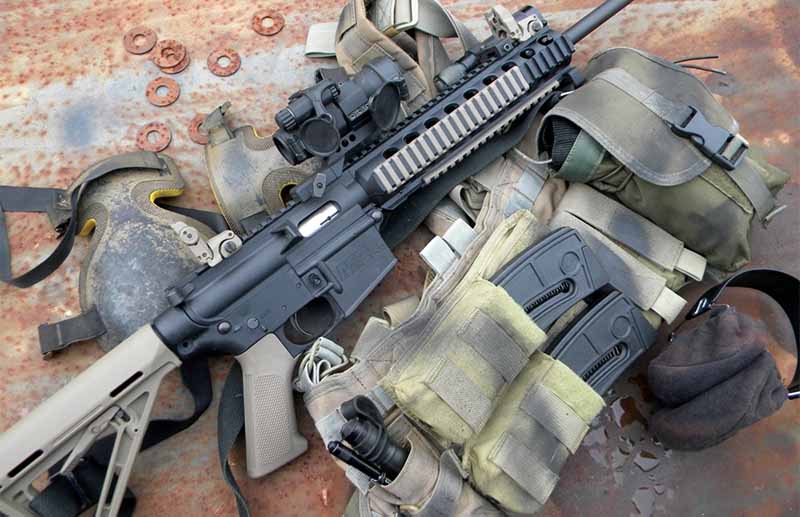
That’s what really sets .22 LR ARs apart from more traditional semi-auto rimfires—their similarity to America’s favorite rifle.
Some may choose an AR-22 over a 10/22 simply because it looks cooler to them, while others may want one because they either have no need for it or cannot afford a centerfire variant. Whatever the reason may be, they can serve about as well as any other .22 rifle and would be a fine choice if used appropriately.
One area where AR-22 rifles are often not used appropriately, however, is training. Specifically, using them as a replacement for training with a centerfire AR. This isn’t to say they can’t ever be used for any type of training, but a lot of people mistakenly believe that they’re just as effective as practicing with the real thing. That simply isn’t true.
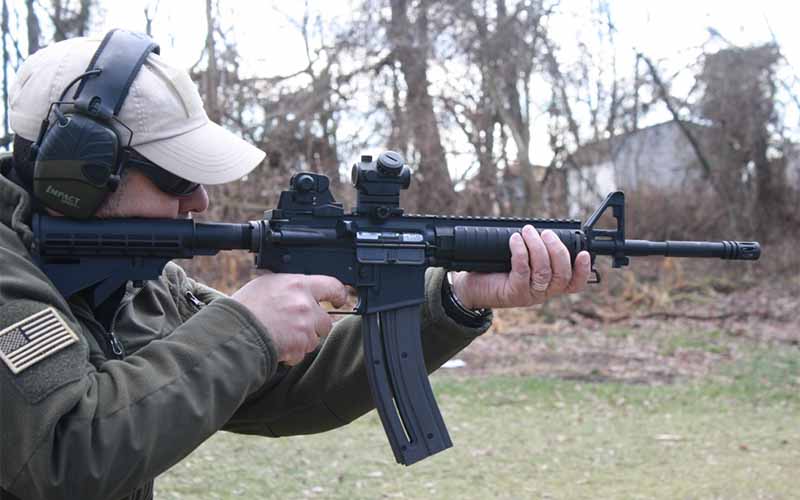
You can't learn to manage recoil that just isn't there, and if the goal is to run a real carbine or rifle under stress, it's just not going to work the same way.
That isn't to say they're without virtues in that regard, as you can use one to get in a lot of quality reps for everything not involving recoil, but eventually, you do need to be shooting .223/5.56 if your goal is to run that caliber effectively.
Should I Get A .22 Conversion Kit Or A Dedicated AR-22?
Which is better depends on your purpose.
If all you're concerned about is plinking and having a good time, a conversion kit is the better choice. It's cheaper and you don't need to fill out a 4473. Just drop the parts in, load up and start shooting.
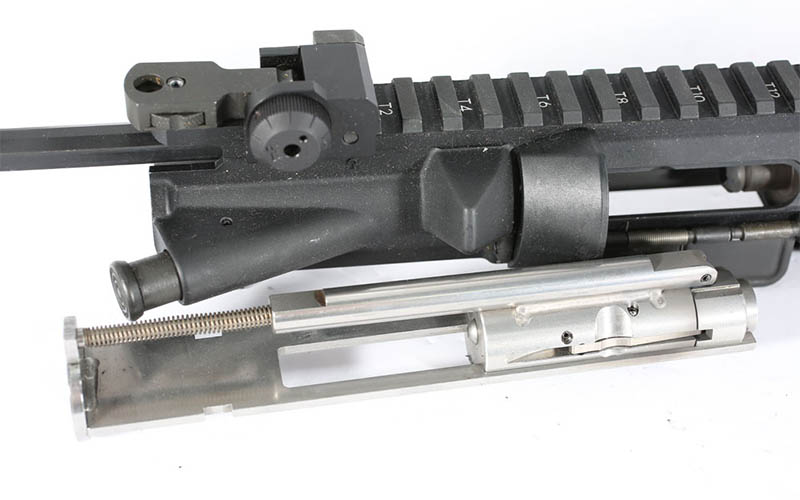
Conversion kits are generally accepted to be mostly reliable, though they are known for occasionally having issues with full-auto guns and some aftermarket parts such as trigger/hammer packs.
There can be some occasional issues with spent shells getting caught in the receiver, but not necessarily frequently. It's also been said that lead bullets can produce fouling in the gas port, but that hasn't been completely substantiated.
If you have any sort of practical purpose beyond plinking in mind, it's best to just buy a dedicated .22 LR upper or a complete AR-22 and not worry about it.
That’s because with conversion kits there's always a worry about potential reliability issues, imaginary or rumored they may be. It's always better to use a tool that was specifically designed for its task rather than one that was adapted to do it.
Further, mechanical accuracy is likely to suffer when using a conversion kit. While the diameter of both bullets is the same (0.224 inches), it’s the twist rate that matters. The .22 LR is best with a very slow twist like 1:12, whereas most centerfire AR rifles typically have faster twists such as 1:7.
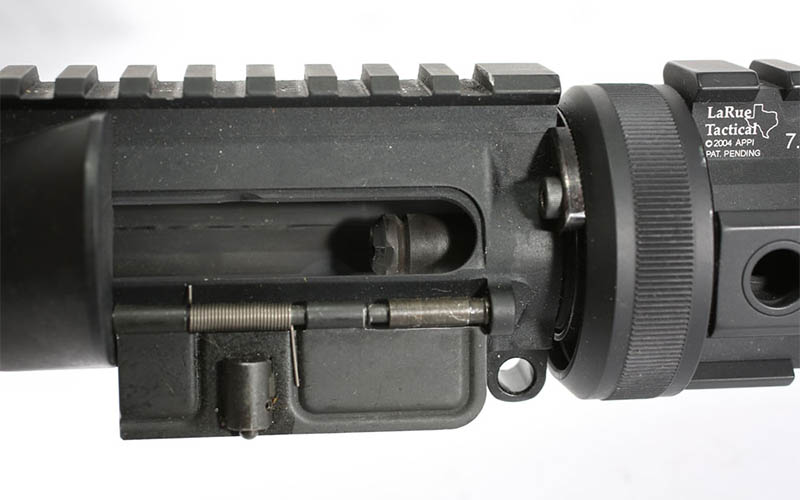
With that said, conversion rifles are absolutely capable of acceptable grouping similar to other semi-auto .22 LR rifles, but a purpose-built rifle or upper can be capable of 2-MOA or better.
For any serious purpose such as hunting, competition or defense, you're better off buying a dedicated AR-22 to get the most capable gun possible.
Explore The Best of .22
- What is the Best .22 Competition Target Pistol
- Will a .22 Stop an Attacker? Considerations Concerning Self-Defense
- Best Ruger .22 Pistols – Affordable Precision for Every Shooter
The 5 Best AR-22 Kits And Rifles
CMMG .22 LR Conversion Kit
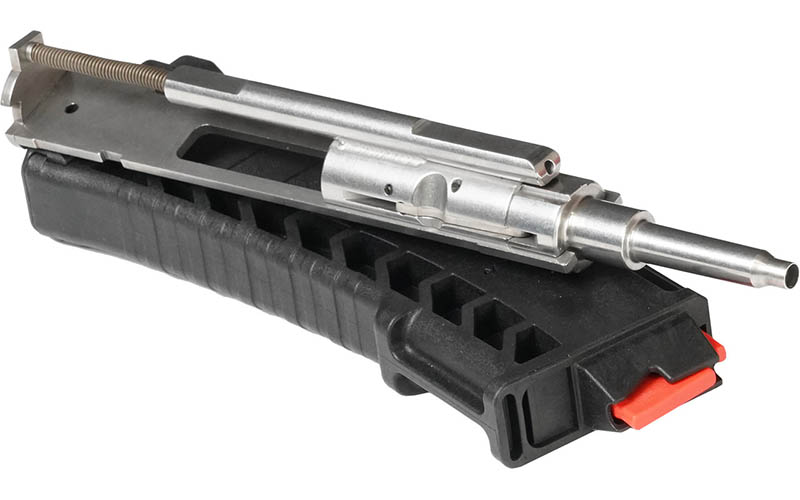
CMMG has long been known for their .22 LR conversion kits, which are still an excellent buy. They are heavily based on the Atchisson kit, but can also be ordered with an improved charging handle and bolt adapter rail to work with the forward assist with their Bravo package.
Proprietary magazines are required, but CMMG .22 LR magazines work with any AR-15 magwell. They can be ordered in 10- or 30-round capacities. MSRP starts at $199.95. Site: cmmg.com.
Nordic Components 22RB 16-Inch Dedicated Upper
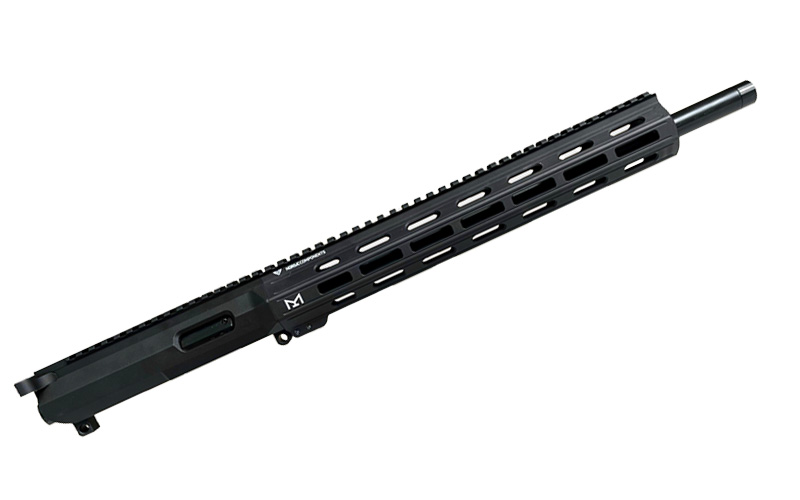
If you wanted to convert an AR but demanded the best in accuracy, the Nordic Components 22RB upper is the ticket. It drops onto any AR-15 lower and provides a 16-inch match barrel with 1:12 twist and a flat-top receiver, M-LOK handguard and a Black Dog .22 LR bolt carrier group.
You'll have to get Black Dog magazines (they work with any AR-15 lower), but, this is the conversion to get for competition or when you take mechanical accuracy seriously. MSRP is $610. Site: nordiccomp.com.
Smith & Wesson M&P15-22
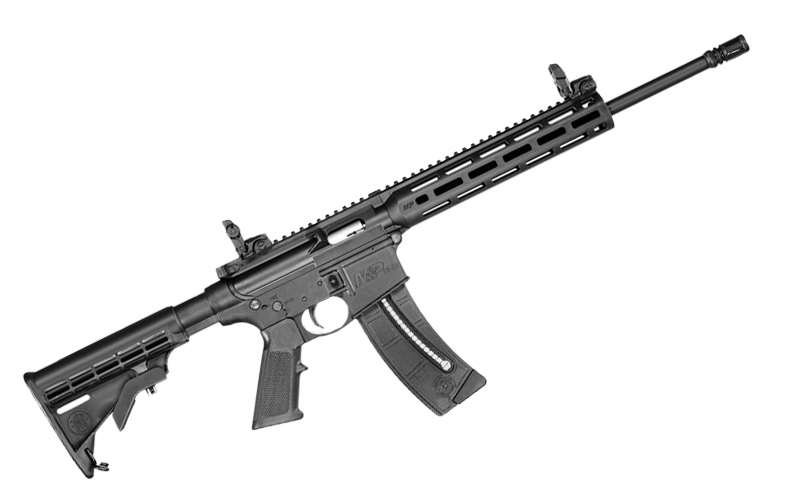
The M&P15-22 is the most popular and most widely available AR-22 on the market. The basic Sport variant features a polymer upper and lower, M-LOK handguard, flat-top receiver and a 16-inch barrel with an A2 birdcage. Magpul MBUS sights are included as well.
It takes proprietary magazines, but so what? Price of entry is $489 for the basic model according to S&W, but street prices are usually even less. As long as you don't mistake it for a match rifle, it will be more than worth the money in sheer fun. Site: smith-wesson.com.
Kriss DMK22C
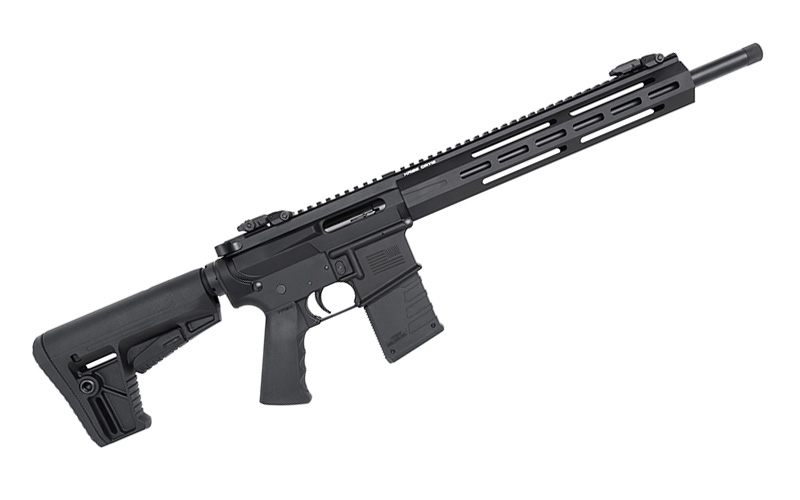
Kriss manufactures two lines of .22 AR, but with a slight twist, as they use proprietary receivers that accept Ruger 10/22 barrels. However, most AR-15 parts (trigger, furniture, etc.) are still compatible save the bolt and barrel.
You can choose the DMK22C with a 16-inch barrel and 12-inch handguard or the DMK22C Arca model with a 16.5-inch barrel and 15-inch handguard. Magpul MBUS sights are also included. MSRP is $849.99 for the standard model and $60 more for the Arca version. Site: kriss-usa.com.
JP Enterprises
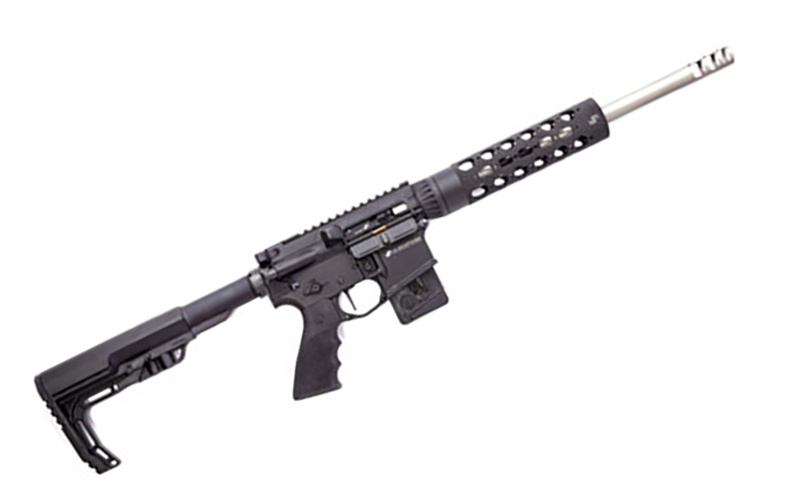
JP Enterprises is a custom shop, meaning that you can order its JP-22 rifle series in several different configurations, including as either a complete rifle or an upper assembly. If you can afford it, you’re more than welcome to drag the JP-22 through the company’s catalog to your heart’s content, but we’ll just go over the basic model here.
Officially called the RR-JP15/22LR-UL, the rifle has an MSRP of $1,789. It features a forged upper and lower, a sleeved ultralight 16-inch Supermatch barrel with a 1:16 twist and a number of other upgrades that any competition shooter would appreciate. Yes, it’s expensive, but when it comes to dedicated AR-22 rifles it doesn’t get much better than this. Site: jprifles.com.
More On-Target Rimfire Info:
- Ammo: Evolution of the Red-Hot .17 HMR
- The Return Of The Red-Hot .17 Mach 2
- Cartridge Debate: .17 HMR vs. .17 WSM
- .22 WMR Vs .22 LR: Application Defines This Rimfire Rumble
- The .22 LR And Its .22 Rimfire Cousins

Next Step: Get your FREE Printable Target Pack
Enhance your shooting precision with our 62 MOA Targets, perfect for rifles and handguns. Crafted in collaboration with Storm Tactical for accuracy and versatility.
Subscribe to the Gun Digest email newsletter and get your downloadable target pack sent straight to your inbox. Stay updated with the latest firearms info in the industry.

![Best Concealed Carry Guns In 2025 [Field Tested] Wilson Combat EDC X9S 1](https://gundigest.com/wp-content/uploads/Wilson-Combat-EDC-X9S-1-324x160.jpg)


![Best 9mm Carbine: Affordable PCCs [Tested] Ruger Carbine Shooting](https://gundigest.com/wp-content/uploads/Ruger-Carbine-Shooting-100x70.jpg)
![Best AR-15: Top Options Available Today [Field Tested] Harrington and Richardson PSA XM177E2 feature](https://gundigest.com/wp-content/uploads/Harrington-and-Richardson-PSA-XM177E2-feature-100x70.jpg)
